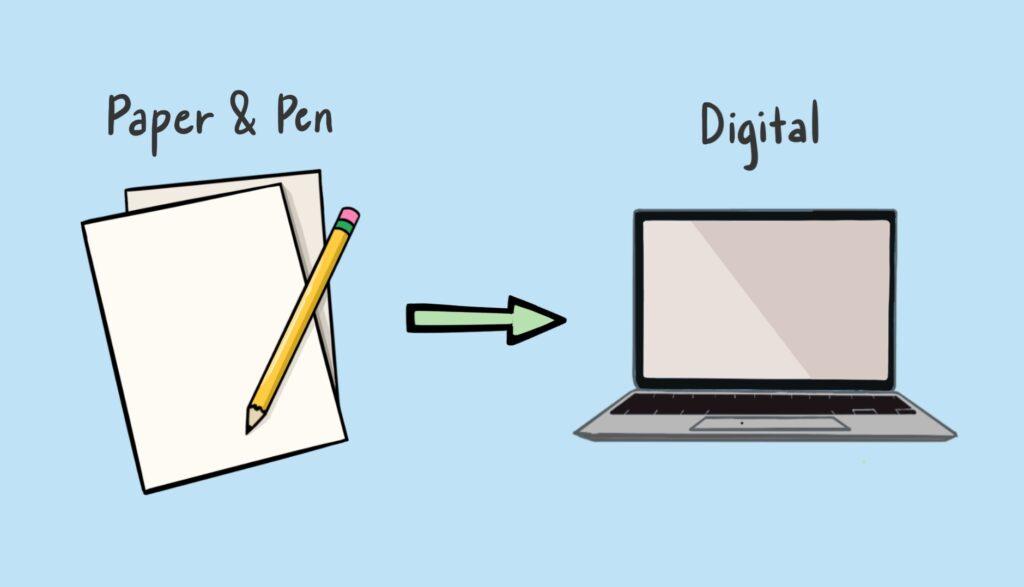The SAT plans to go digital next spring for U.S. students after finding success piloting the digital version in the U.S. and internationally in 2021. CollegeBoard argues that the transition to digital will make the SAT less stressful for students as it is similar to their day-to-day computer work.
Nevertheless, many students are skeptical of the new format: They fear technical difficulties, accidentally clicking on wrong answers and other problems caused by the overall unfamiliarity with the digital version.
But apart from these concerns, the benefits of a digital SAT ultimately outweigh the drawbacks, as the digital version provides useful new features, online accessibility for students (especially international test-takers), faster score releases and other long-term advantages.
One of the digital SAT’s new additions is an online timer. During the test, an on-screen countdown clock can help students with time management; however, test-takers also have the option of hiding the clock if it induces stress. In comparison to the traditional paper-and-pen SAT where clocks are not required of testing centers and students are generally only provided with 5-minute warnings before tests end, this change allows students to pace themselves appropriately.
There are also tools that allow students to flag questions to come back to later, which can make checking work much faster and easier in comparison to flipping through a booklet, trying to locate a question.
Furthermore, the new format retains the paper SAT’s ability to annotate text, while eliminating one critical flaw: usage of an unsustainable volume of paper. In 2022, around 1.7 million students took the SAT, using more than 100 million sheets of paper, equivalent to approximately 10,000 standard pine trees, 6,500 tons of carbon and 850 million liters of water. This change dramatically reduces CollegeBoard’s carbon footprint.
In terms of test length and content, the exam has even been remodeled to be more student-friendly. Unlike the paper version, which requires over 3 hours of concentration, the new digital SAT is just 2 hours and 14 minutes, made up of a 64-minute long English-based Reading and Writing (EBRW) section and a 70-minute long Math section. The sections are each divided into two equal length modules with a 10-minute break in between the sections.
Specifically for the EBRW section, which combines the old reading and writing sections into one, the digital SAT will shorten passages for both, which can be beneficial for students who have trouble comprehending multiple-page passages. Each passage only has one related question, making it more straightforward as students only need to look for one answer while reading.
A digital test also allows students to receive their scores in days instead of weeks. In addition to shortening the anxiety-inducing wait, this allows students to quickly plan their next steps — if they want to retake the test or submit their scores to colleges earlier.
Of course, the switch to a digital SAT isn’t all positive. It’s much easier to misclick the wrong answer choices and skip questions by accident compared to paper tests, where spending a few seconds on bubbling each answer helps students ensure that they don’t fill in the wrong circle and any blank questions are easily spotted on the scantron sheet.
Additionally, technical difficulties are inevitable with so many students testing at once on the same wifi — and properly setting up computers might lead to further waiting time, in addition to the near-hour that students already expect in delays. Although CollegeBoard claims that students who suffer from technical difficulties will have their work saved and receive extra time, experiencing the nightmare of losing connection during a test can potentially break students’ mental focus and make them feel nervous, thus hindering their performance.
Most importantly, the preparation material for the digital SAT is limited as there are only four official practice tests, while the paper SAT has eight official tests and many more provided by SAT tutoring companies. On average, SAT experts recommend students to take 3-5 practice SATs prior to their actual exam — and in the face of an unfamiliar format, the limited online practice tests will put students at a disadvantage for success in the first few years after the restructuring.
SAT tutoring centers such as Kaplan and Revolution Prep have already rolled out online practice tests — but on the whole, tutoring centers are limited in both the tests they can provide and the similarity of their test simulations to the actual SAT.
Still, the SAT shifting to a digital format benefits a majority of SAT-takers. It is shorter, allows for time-keeping and brings flexible testing to students abroad — along with cutting out the thick paper booklets with heavy environmental consequences. It reflects CollegeBoard’s efforts to make a more relevant and accessible test for all, placing less emphasis on comprehension of extended passages and primary sources, in turn making the test easier and less stressful. Although the digital SAT is bound to have unprecedented challenges, the potential benefits make it a choice worth supporting.






























